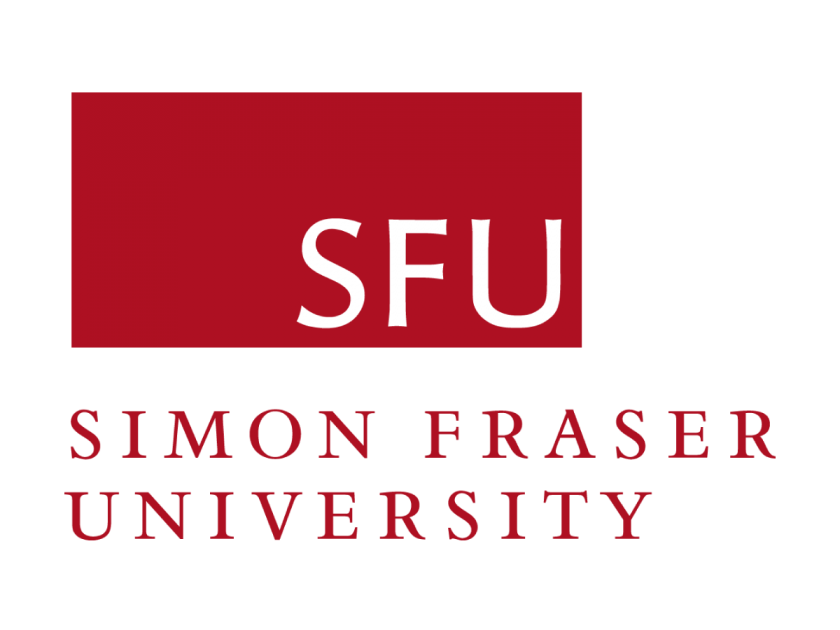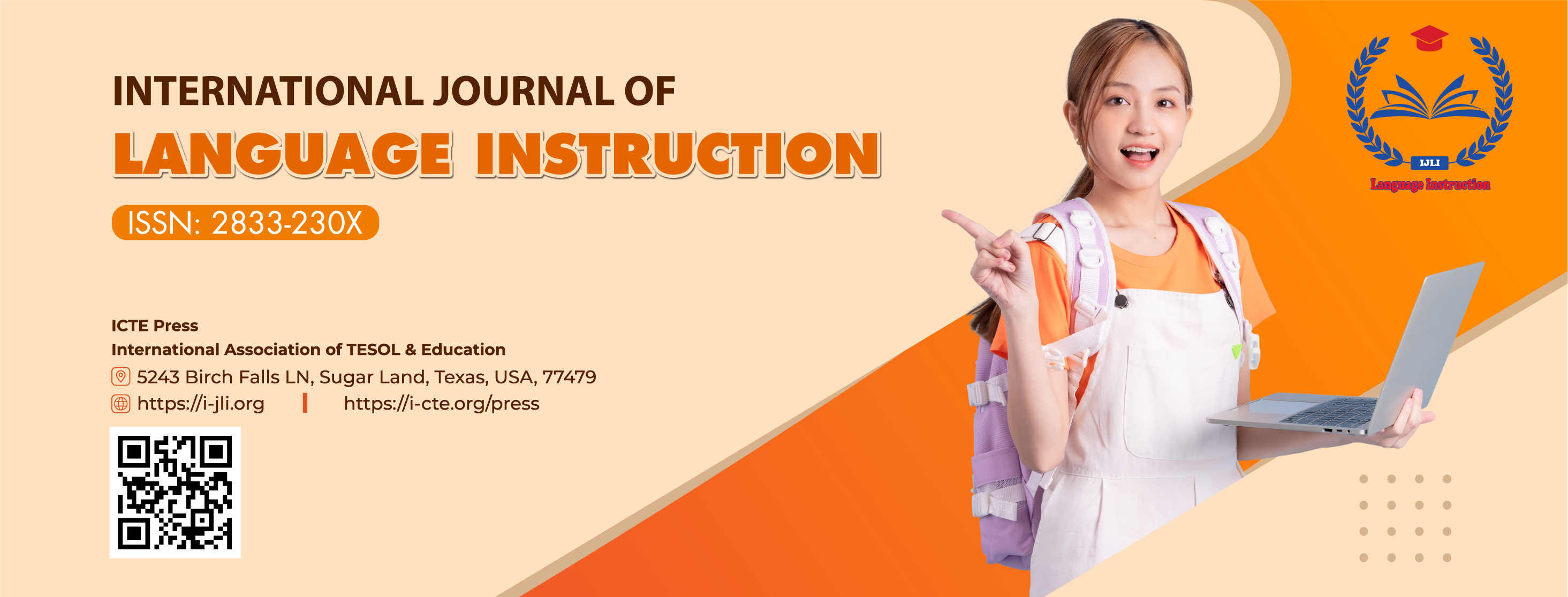English for the Apparel Merchandisers in Bangladesh: A Needs Analysis
DOI:
https://doi.org/10.54855/ijli.25422Keywords:
ESP, Needs analysis, Apparel merchandisers, English language skills, BangladeshAbstract
Despite the increasing demand for English proficiency in Bangladesh’s ready-made garment (RMG) industry, there is limited research on the specific English language needs of apparel merchandisers. This study aims to fill that gap by exploring the English communication challenges and course preferences of merchandisers in Bangladesh. Utilizing an explanatory sequential mixed-methods design, data were gathered from 30 junior to mid-level merchandisers through surveys and interviews. The findings show that merchandisers often use English for emailing and video conferencing with buyers but struggle with their speaking and writing skills. Despite their hectic schedules, participants were motivated to enhance their English and preferred flexible, context-based courses. The study recommends a customized English for Specific Purposes (ESP) course focusing on practical communication, particularly speaking and email writing. This research underscores the urgent need for tailored ESP programs to align English education with the professional demands of Bangladesh’s RMG sector, providing a model that can guide global ESP course design in similar industries.
References
Ahmad, S., & Rahman, S. (2021). An ethnographic exploration of the presence of English and its roles in the socio-economic development in the rural context in Bangladesh. Journal of the Institute of Modern Languages, 32(1), 37-66. https://www.researchgate.net/publication/361759034
Ahmmed, R., Sinha, B. S., Khan, R., & Islam, D. M. (2020). A needs analysis of maritime English language skills for Bangladeshi seafarers to work onboard ships. Marine Policy, 119, Article 104041. https://doi.org/10.1016/j.marpol.2020.104041
Amin, M. A., & Greenwood, J. (2018). The UN sustainable development goals and teacher development for effective English teaching in Bangladesh: A gap that needs bridging. Journal of Teacher Education for Sustainability, 20(2), 118-138. https://doi.org/10.2478/jtes-2018-0019
Andriani, D. (2021). The use of English in promoting fashion. International Journal of English and Applied Linguistics (IJEAL), 1(3), 197-202. https://doi.org/10.47709/ijeal.v1i3.1199
Anik, A. R. (2020, August 20). Pursuing apparel merchandising as a career. The Business Standard. https://www.tbsnews.net/feature/pursuit/pursuing-apparel-merchandising-career-121864
Bekar.com. (2019). মার্চেন্ডাইজার হিসেবে ক্যারিয়ার শুরু করবেন যেভাবে [How to start a career as a merchandiser]. Bekar. https://bekar.com.bd/মার্চেন্ডাইজার-কাজ/
Briana, J. C. D., & Mutia, M. L. D. (2019). An English language needs analysis by Information Technology students [Conference paper]. Linguistic Society of the Philippines National Conference and General Meeting 2018. https://www.researchgate.net/publication/331861473
Chowdhury, T. A., & Anon, N. Z. (2021). Exploring skill requirements of local and multinational companies for entry-level marketing professionals in the apparel industry in a developing country. Journal of Global Fashion Marketing, 12(4), 359-374. https://doi.org/10.1080/20932685.2021.1939758
Creswell, J. W., & Clark, V. L. P. (2018). Designing and conducting mixed methods research (3rd ed.). SAGE Publications.
Dinh, T. H. (2023). Exploring EFL university lecturers’ perceptions of benefits and challenges of using Audio-visual Aids. International Journal of Language Instruction, 2(4), 43–53. https://doi.org/10.54855/ijli.23243
Dudley-Evans, T., & John, M. J. S. (1998). Developments in English for specific purposes. Cambridge University Press.
Ebling, B., & Kavanaugh, A. (1980). A mini-French course for fashion-merchandising majors. The French Review, 54(2), 299-300. http://www.jstor.org/stable/391496
Flowerdew, L. (2013). Needs analysis and curriculum development in ESP. In B. Paltridge & S. Starfield (Eds.), The handbook of English for specific purposes (pp. 325-346). Wiley-Blackwell. https://doi.org/10.1002/9781118339855
Frazier, B. J., & Cheek, W. K. (2016). An industry view of competencies for entry-level merchandising jobs: Application of the ITAA meta-goals. Clothing and Textiles Research Journal, 34(2), 79-93. https://doi.org/10.1177/0887302X15622003
Hamid, M. O. (2020). Globalisation, English for everyone and English teacher capacity: Language policy discourses and realities in Bangladesh. In B. Lingard (Ed.). Globalisation and education (pp. 207-228). Routledge. https://doi.org/10.4324/9780429464454
Hossain, J. (2013). ESP needs analysis for engineering students: A learner-centered approach. Journal of Presidency University, 2(2), 16-26. http://presidency.edu.bd/uploads/Article003.pdf
Islam, S., & Islam, T. N. (2018). Insights into the skill development issues of management jobs: A study on RMG and textile sectors of Bangladesh. Asian Social Science, 14(12), 56-66. https://doi.org/10.5539/ass.v14n12p56
Jacobs, B., & Karpova, E. (2023). “Must-have” skills and knowledge for apparel merchandising professionals in South Africa. Journal of Global Fashion Marketing, 14(2), 206-225. https://doi.org/10.1080/20932685.2022.2055609
Khan, R., & Chaudhury, T. A. (2012). The Bangladeshi employment sector: Employer perspectives concerning English proficiency. Indonesian Journal of Applied Linguistics, 2(1), 116-129. https://doi.org/10.17509/ijal.v2i1.78
Kim, J. O., Forsythe, S., Gu, Q., & Moon, S. J. (2002). Cross‐cultural consumer values, needs, and purchase behavior. Journal of Consumer Marketing, 19(6), 481-502. https://doi.org/10.1108/07363760210444869
Lavrakas, P. J. (2008). Encyclopedia of survey research methods (Vols. 1-0). Sage Publications, Inc. https://doi.org/10.4135/9781412963947
Nguyen, L. A. P., & Nguyen, T. H. B. (2024). A study on adult learners of English as a foreign language in Vietnam: Motivations, advantages, and challenges. International Journal of Language Instruction, 3(1), 31-42. https://doi.org/10.54855/ijli.24313
Nickerson, C. (2005). English as a lingua franca in international business contexts. English for Specific Purposes, 24(4), 367-380. https://doi.org/10.1016/j.esp.2005.02.001
Rabolt, N. J., & Fisher, V. (2016). Fashion merchandising: Principles and practice. Fairchild Books.
Rashid, M. (2023, December 2). RMG sector faces transformational challenges. The Daily Star. https://www.thedailystar.net/business/column/news/rmg-sector-faces-transformational-challenges-3484106
Romanіuk, S., Denysiuk, L., & Danilova, N. (2022). Formation of communicative competence of marketing specialists during the study of English. Scientific Notes of Ostroh Academy National University: Philology Series, 13(81), 104-107. https://journals.oa.edu.ua/Philology/issue/view/122
Roshid, M.M. (2018). English, empowerment and economic development: A study in an international business. In R. Chowdhury, M. Sarkar, F. Mojumder, & M. Roshid (Eds.), Engaging in educational research. education in the Asia-Pacific region: Issues, concerns and prospects (Vol. 44, pp. 315-331). Springer. https://doi.org/10.1007/978-981-13-0708-9_17
Roshid, M. M., Webb, S., & Chowdhury, R. (2022). English as a business lingua franca: A discursive analysis of business e-mails. International Journal of Business Communication, 59(1), 83-103. https://doi.org/10.1177/2329488418808040
Roshid, M. M., & Kankaanranta, A. (2023). English communication skills in international business: Industry expectations versus university preparation. Business and Professional Communication Quarterly. https://doi.org/10.1177/23294906231184814
Sing, C. S. (2017). English as a lingua franca in international business contexts: Pedagogical implications for the teaching of English for Specific Business Purposes. In F. Rainer & G. Mautner (Eds.), Business communication: Linguistic approaches (pp. 319-356). DeGruyter. https://doi.org/10.1515/9781614514862-014
So-mui, F. L., & Mead, K. (2000). An analysis of English in the workplace: The communication needs of textile and clothing merchandisers. English for Specific Purposes, 19(4), 351–368. https://eric.ed.gov/?id=EJ608159
The Daily Kaler Kontho. (2016, May 25). মার্চেন্ডাইজিং দুনিয়ায় স্বাগত [Welcome to the world of merchandising]. The Daily Kaler Kontho. https://www.kalerkantho.com/print-edition/chakriache/2016/05/25/362044
Todea, L., & Demarcsek, R. (2017, May 5). Needs analysis for language course design. A case study for engineering and business students. In IOP Conference Series: Materials Science and Engineering. Vol. 200, 012064. IOP Publishing. https://doi.org/10.1088/1757-899X/200/1/012064
Viet-Nga, N. T. (2020). Proposition of some solutions to improve the motivation in English learning for the students of garment technology and fashion design. Vinh University Journal of Science, 6(1). http://dx.doi.org/10.19044/ejes.v6no1a4
Xydopoulos, G. J., & Papadopoulou, R. (2018). Fashion anglicisms in modern Greek: A preliminary investigation. LFE: Revista de Lenguas para Fines Específicos, 24(1), 166-187. http://dx.doi.org/10.20420/rlfe.2018.358
Downloads
Published
Issue
Section
License
Copyright (c) 2025 Md. Didarul Islam, Saleh Ahmad

This work is licensed under a Creative Commons Attribution 4.0 International License.
The copyright of all articles published in the International Journal of Language Instruction (ijli) remains with the Authors, i.e. Authors retain full ownership of their article. Permitted third-party reuse of the open access articles is defined by the applicable Creative Commons (CC) end-user license which is accepted by the Authors upon submission of their paper. All articles in the ijli are published under the CC BY-NC 4.0 license, meaning that end users can freely share an article (i.e. copy and redistribute the material in any medium or format) and adapt it (i.e. remix, transform and build upon the material) on the condition that proper attribution is given (i.e. appropriate credit, a link to the applicable license and an indication if any changes were made; all in such a way that does not suggest that the licensor endorses the user or the use) and the material is only used for non-commercial purposes.
Authors are able to enter into separate, additional contractual arrangements for the non-exclusive distribution of the journal's published version of the work (e.g., post it to an institutional repository, in a journal or publish it in a book), with an acknowledgment of its initial publication in this journal.











